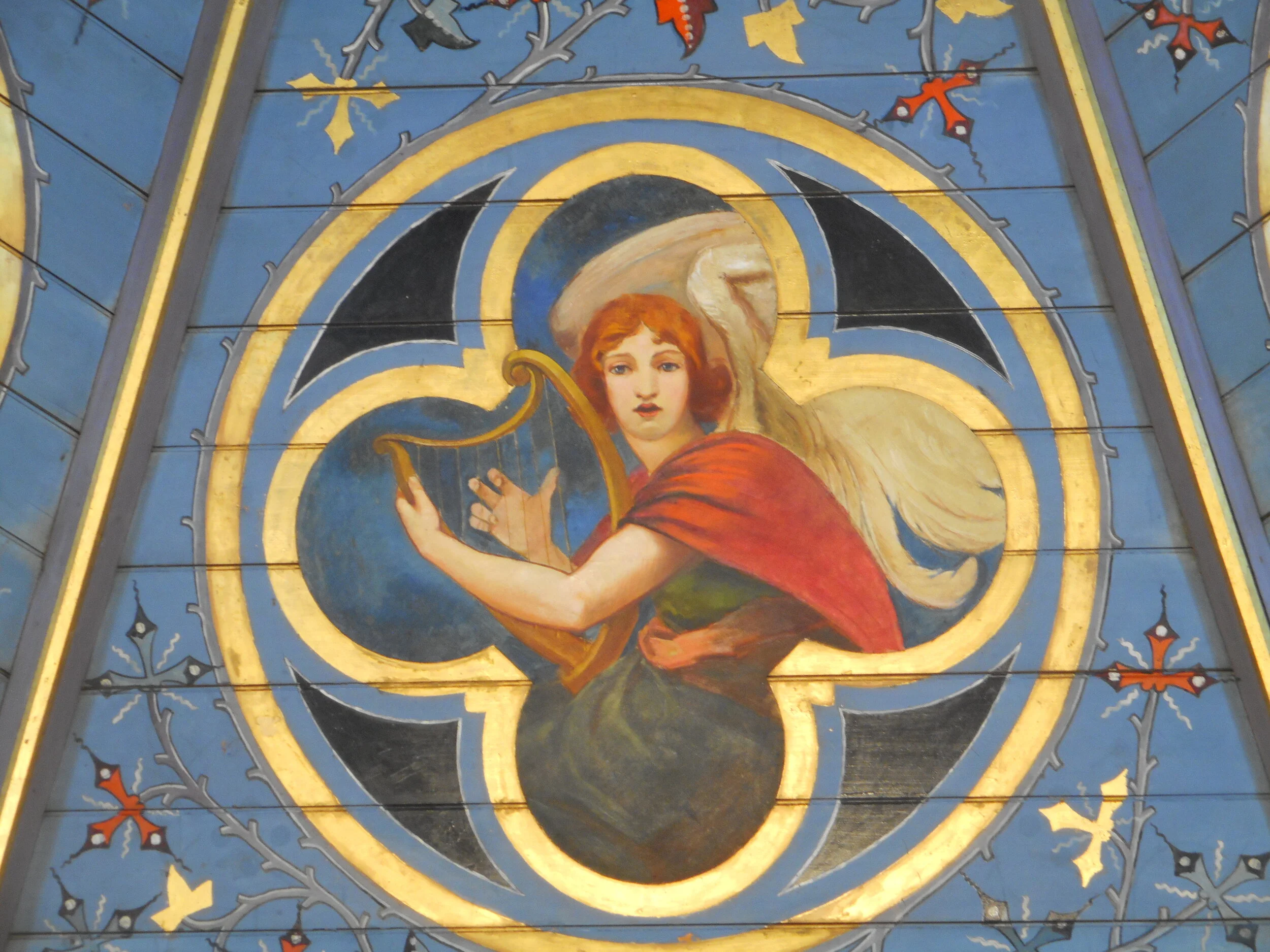St Mary's is the proud custodian of Queensland's oldest organ. The instrument arrived in Brisbane on 10th July 1876 and was first played on 31 August that year. Built (or possibly rebuilt) in 1823, it is believed to contain some of the oldest pipes in Australia. (Sw: Stop Diapason 8, upper pipework from the 1690's). Though it is the oldest, it is not the first organ in Queensland, which is in St Paul's Ipswich. The organ was damaged when the roof of St Mary's collapsed during a cyclone on 2 April 1892. Subsequent repairs and renovations to the instrument were carried out by Whitehouse and Marlor of Brisbane in 1897. In 1961 the organ was rebuilt and enlarged by Whitehouse Brothers who replaced the original mechanical action and slider chests with electro-pneumatic mechanisms. The instrument has been maintained by Pierce Pipe organs since 1994.
The organ is presently in need of major renovation which requires reconstructing mechanisms and pipe work which are in harmony with the spirit of the original instrument. The responsible conservation of St Mary's organ is of historic significance for the wider city, state and national communities as well as the people of St Mary's parish.
Graeme Rushworth was appointed organ consultant in 2003 and a combination new organ / reconstruction / restoration is planned for the coming years. Tax deductible donations to St Mary's Organ Project may be made via St Mary's Music Foundation.
Dr Geoffrey Cox wrote a major article for the THE ORGAN (No.217, Vol.55, 1976-77) which investigates the history of St Mary's pipe organ. Click here to view Dr Cox's documentation of St Mary's pipe organ for the Organ Historical Trust of Australia.
St Mary's Organ History
From 'Statement of significance, history and conservation proposal for pipe organ at St Mary’s, Kangaroo Point, Queensland', March 2003 by Graeme Rushworth:
St Mary's pipe organ is considerably older than the Church, being the oldest in Queensland and one of only several organs of c.1800 in Australia. It is also the only example in Australia of an organ built by H C Lincoln of London. The church and its organ are registered on the National Estate, the Queensland Heritage Register, and are classified 'A' by The National Trust of Queensland.
Although the history of the organ at St Mary's Church has created much speculation and investigation, details of its original location, specification, early history and the circumstances of its acquisition have so far proved elusive. Unlikely rumours surround the provenance of this instrument, but there is circumstantial evidence that it came from Wheler Chapel/St Mary's, Spital Square, London, when it was displaced by a new organ in 1874.
It has a brass builder's plate stating it was built by 'H C Lincoln, Organ Builder to the King, London'. This patronage presumably refers to King George IV. Also, an inscription in its original Swell box said 'This box was made by H L & Staff in Easter Week March 31 1823'. The year of 1823 might therefore be accepted for the organ's construction.
Henry Cephas Lincoln (1789-1864) was a son of John Lincoln, organ builder. Henry C Lincoln is said to have worked with his father 'from an early age' and was apprenticed to organ builders Flight & Robson. Afterwards he joined his father and their firm was styled 'Lincoln & Son' from 1810 to about 1819. From his workshop at 196 High Holborn, London, H C Lincoln is said to have had a 'considerable' output with organs supplied to churches from the Midlands to the Channel islands, with his best known being those at Brighton for the Pavilion and the Parish Church. Apart from several chamber organs, very little of his work survives intact, with the best example probably being that at St John-the-Baptist Church, Thaxted, Essex, built in 1821. The case of an H C Lincoln organ of 1813 is at St Andrew's Church, Stoke Dry, Rutland.
The H C Lincoln organ in St Mary's Church, Kangaroo Point, was brought to Brisbane by the ship National that sailed from London on 20 March 1876 and arrived here on 10 July. The organ was opened in the Church on 31 August of that year. Contemporary press reports say nothing of the organ's origins, but do name the committee formed to raise by subscriptions the cost of its purchase and installation, amounting to £287. Messrs Devitt and Moore (shipping agents for Messrs G Raff & Co) waived the freight charges, and Messrs Armour & Co made no charge for wharfage dues.
Although rebuilt twice (1897 and 1961) since 1876, some of the original fabric of this important instrument has been retained, including the case front and one of its sides, four of its display pipes, the greater part of its internal pipework numbering about 400 pipes, and some components of its winding arrangement. It is regarded as a precious component of St Mary's Church and also of Brisbane's history.
